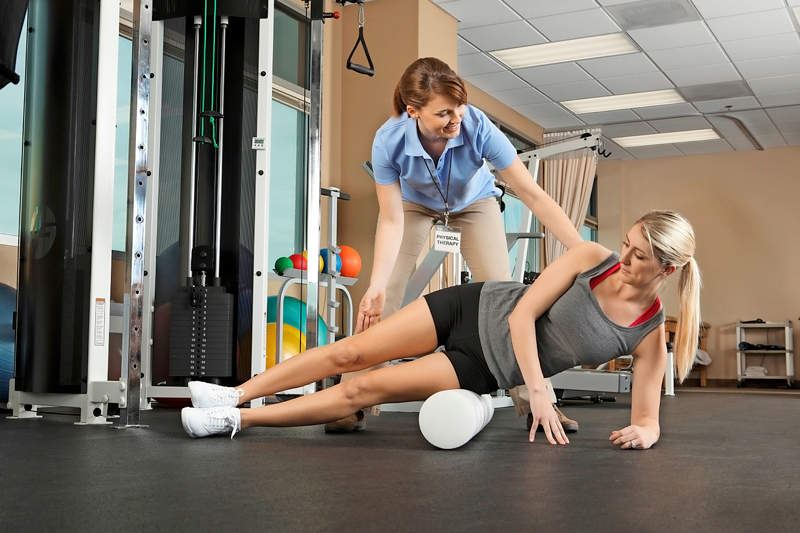Just Roll With It—Preventing Sports Injuries with MFR
By Nicki Anderson
March 2014 View more Health & Fitness

Most of us can relate to the numerous relaxation benefits of a massage. However, if you don’t have time to connect with your massage therapist, a do-it-yourself massage technique called Myofascial Release (MFR) is a convenient, growing, and inexpensive option. Done correctly, MFR can keep your body strong and injury free.
What is MFR?
Like a massage, Myofascial Release is a soft tissue therapy designed to relax contracted muscles, improve blood and lymphatic circulation, and stimulate stretch reflex in muscles. More and more athletes are utilizing home MFR tools to keep their muscles healthy and their performance optimal.
To help you visualize what the fascia is, consider a cut of meat. The very thin white skin that covers the meat is the fascia. It serves to support and surround our muscles. In a healthy body, the fascia helps maintain good posture, range of motion, and flexibility. It also gives our body tremendous strength helping us deal with excessive stress and injuries.
The Benefits of MFR
Injuries, repetitive motion, or even prolonged inactivity can degrade the function of your muscles and fascia.
“The result is localized areas with compromised function, commonly referred to as knots or trigger points,” said Kristy Lancaster, licensed, orthopedic massage therapist. “This causes tenderness to the touch and restricted movement of the surrounding muscle.”
Declining function of muscles and fascia can cause serious issues. “When dysfunctional, your fascia will restrict the flow of oxygen, nutrients, and lymphatic fluid to the tissues,” said Lancaster. “When normal (or healthy) function is restored in your fascia, the delivery of oxygen and nutrients via blood flow to the surrounding tissues is restored, and the metabolic waste is removed from your cells, promoting healthy circulation.”
Bottom line, healthy fascia allows healthy performance.
That is where MFR comes in. “The health of dysfunctional tissue can often be restored through proper Myofascial Release therapy and should initially be provided by a trained health care professional,” said Lancaster.
MFR at Home
If you’re considering MFR, Lancaster suggests initial therapy be done under the supervision of a skilled professional to learn proper technique and minimize injury. Getting expert insight assures that whatever tool or technique you’re using, you’re doing it right, making the process effective.
Here are a few of my favorite products on the market.
The Trigger Point ® Therapy system is what I currently use and is excellent for lower body. As a runner, I try to use my deep massage kit at least three times per week. I used to deal with chronic plantar fasciatis. Since I’ve used the system, I’ve remained healthy.
Theracane: The hardest part of the body to reach is the neck and trapezius (upper back). The unique design of the Theracane allows you to reach those areas. It has six different massaging points enabling you to tackle your neck, back, arms, and legs. The hook serves to address your neck, back, and hips. The other points are great for hip flexors and triceps.
Power stick: Also known as “the stick” has been around for a while. It was one of the first tools I used to address my quadriceps and calf issues. The 27” stick allows you to roll using greater pressure and accessing deeper areas. Although the stick can be used on both lower and upper body, if you have limited upper body mobility, the 27” stick is best.
Lancaster reminds us that despite the benefits of MFR the ‘No Pain, No Gain’ myth, is a dangerous philosophy. “Any program which places joints, muscles, fascia, or any other connective tissues in jeopardy of pain (by force or otherwise), will endanger the tissues that are incorrectly acted upon.”
As long as you consult a professional first, MFR can be the secret ingredient to a solid recovery program.


